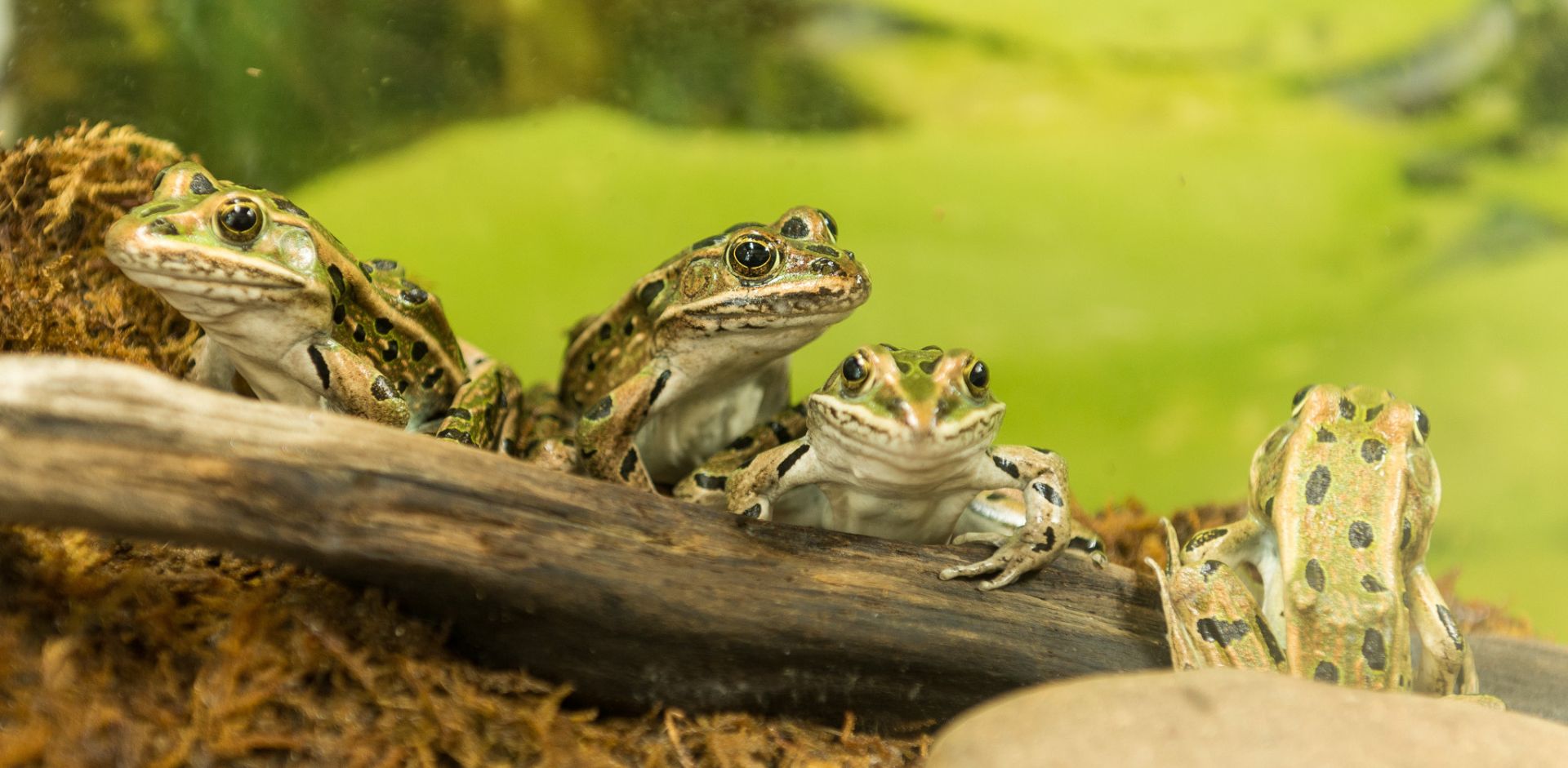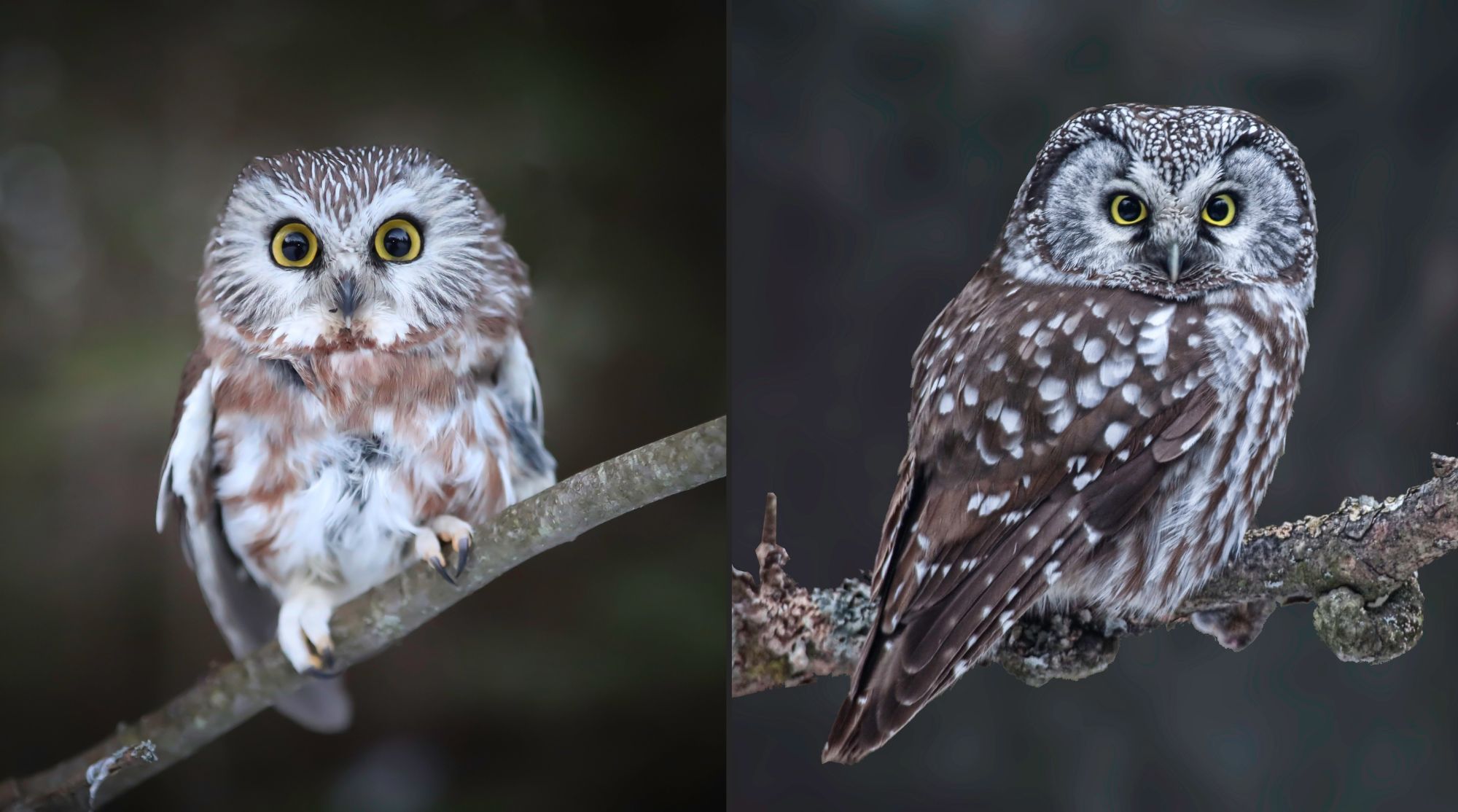

The province of Quebec is home to ten species of owls, all in the Strigidae family. From the rare great grey owl to the Arctic snowy owl and the very common great horned owl, their size, color and habitat are very diverse. Camouflage is their strength, making them hard to spot in the wild. The northern saw-whet owl is very good at this game of hide and seek.
The northern saw-whet owl is the smallest owl in the province, with a length of 20 centimeters and a wingspan of 45 centimeters on average. Its back is brown with white spots and its chest is white with brown stripes. It has big yellow eyes, a dark beak and white X across its face. This X is especially visible in young owls, which could help the adults for feeding time.
Although one of the most common owls in coniferous forests in North America, it is fairly difficult to observe. Its small size, cryptic colours and nocturnal activities are all reasons that make it so discreet. The best way to detect it is through its song, the too-too-too, which can be heard from January to May. This song is probably what gave it its name, because some say it sounds like a saw being sharpened on a whetting stone. There is no consensus on this theory. The song is used by the male to advertise its territory and can be heard for almost a kilometer! The female uses her version of the song to answer the male during courting.
During courtship, the male sings and the female answers. The male then makes about twenty rounds in flight around her, before landing, nearby, with a prey as a gift. Usually monogamous for a season, the male sometimes mates with multiple females, if the preys are abundant. The female choses the nest site, sometimes helped by the male. The cavities of dead trees and old woodpeckers’ nests are perfect for laying eggs. Human nesting boxes are also an option. Once the first egg is laid, the female remains in the nest for brooding. On average, five or six eggs are laid 48 to 72 hours apart. After incubating for about 20 days, the female remains in the nest until the youngest is 18 days old. She then leaves the nest and the male continues to bring food to the young. The departure of the female is quickly felt. As long as she’s in the nest, she keeps it very clean. But once the female parts, the nest is filled with excrements, pellets and parts of prey decomposing. Fortunately, the young leave the nest at the age of 27 to 36 days, after which they remain dependent on the parents for four to eight weeks.
The northern saw-whet owl has a cousin who looks quite similar, the boreal owl. It is slightly longer by about five centimetres and has an average wingspan of 58 centimetres. Apart from the size, it is its greyish white facial disk bordered of brown, its tiny white spots on the crown and its light bill that distinguishes it from the northern saw-whet owl. Lifestyles and feeding habits are similar in both species, with the exception of the boreal owl distribution, which is more northern than the northern saw-whet owl.
By their habit to nest in the hollows of trees, or in woodpeckers’ holes, the two species of owl are dependent on mature trees and snags. Habitat loss, as a result of logging, is therefore a potential threat to these owls. Although common and widespread, the discrete lifestyle of the northern saw-whet owl makes tracking populations and demographic trends difficult. Standardized surveys such as the Christmas Bird Count are very inefficient for northern saw-whet owl count. Follow-ups must be done via specific counts. In the case of boreal owl, its northern distribution makes tracking even more complex.
These little owls remain mysterious and enigmatic for most bird watchers. It happens, on occasion, that a lucky birder sees one during his daytime rest. It is therefore essential to respect the ethics of bird watching. You must respect the bird and its environment, avoiding disturbing it, among other things. Good observation!
Pictures from left to right : Northern saw-whet owl, boreal owl
Author : Stéphanie Bentz, biologist in charge of education
Sources :
UQROP. Petite nyctale [Online] https://www.uqrop.qc.ca/upload/files/oiseaux-quebec/strigidae/PN.pdf (Accessed February 6, 2023)
All about birds. Northern Saw-whet owl [Online] https://www.allaboutbirds.org/guide/Northern_Saw-whet_Owl/overview (Accessed February 6, 2023)
Audubon. Northern Saw-whet Owl [Online] https://www.audubon.org/field-guide/bird/northern-saw-whet-owl (Accessed February 7, 2023)
Gouvernement du Québec. Pleins feux sur… la recherche et la nyctale de Tengmalm [Online] https://mffp.gouv.qc.ca/jeunesse/recherche-nyctale-tengmalm/ (Accessed February 8, 2023)
All about birds. Boreal owl [Online] https://www.allaboutbirds.org/guide/Boreal_Owl/overview (Accessed February 9, 2023)
Audubon. Boreal owl [Online] https://www.audubon.org/field-guide/bird/boreal-owl (Accessed February 9, 2023)